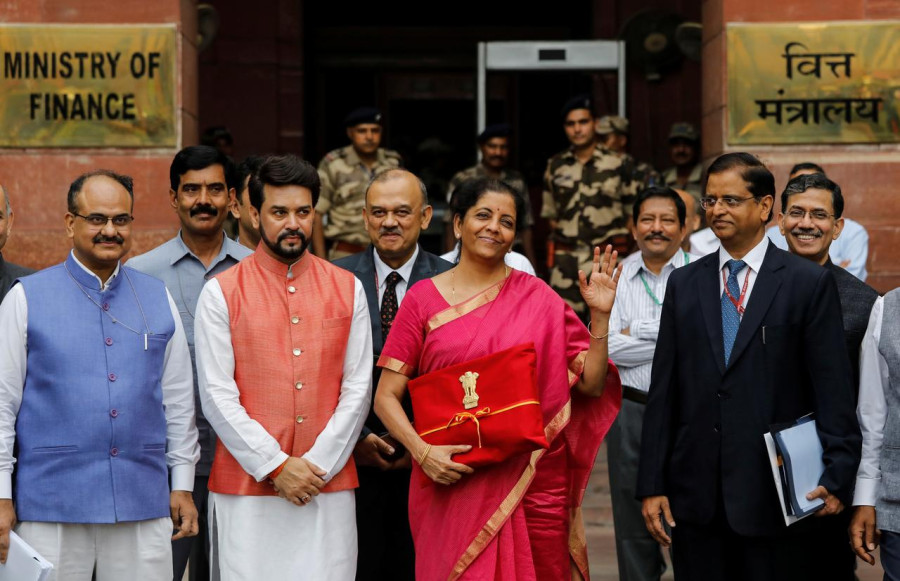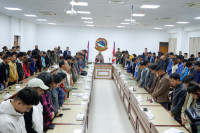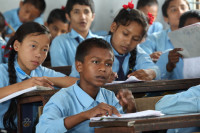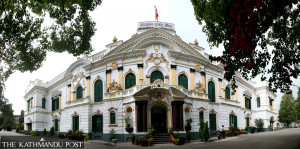Columns
The Indian budget’s promise of a focus on research
Indian Finance Minister Nirmala Sitharam, an alumnus of Jawaharlal Nehru University, seems to not have forgotten the importance of research in development.
Mahendra P Lama
After many years, the budget for the fiscal year 2019-20 presented in the Indian Parliament by the country’s second woman finance minister evoked much coverage and discussions in national and regional newspapers and a range of social forums. While an ebullient Nirmala Sitharaman was delivering the budget speech, many of her 35-odd class mates nostalgically reminiscenced fundamentals of our learning in the Centre for Economic Studies and Planning in Delhi’s Jawaharlal Nehru University in the early 1980s. Many of our batch mates had come to Delhi for the first time and had hugely varying ideological orientations from the left, ultra left and free thinking to the right-of-centre. Nirmala Sitharaman has not changed a bit; vociferous, argumentative, intellectually sound and smartly dressed as she used to be in our graduate school days.
University days
We were then taught the intrigues of economics by widely respected Professors including Krishna Bhardwaj, Amit Bhaduri, Prabhat and Utsa Patnaik, DN Rao, RP Sengupta, Anjan Mukehrji, Satish Jain, Sheila Bhalla, Sunanda Sen, CP Chandrasekhar and Amal Sanyal. They were symbols of simplicity and had the impeccable ability to intellectually arouse and influence the young minds from across the country. Their own writings were fondly read and discussed in other universities. Lectures by Krishna Bhardwaj on classical political economy, Mukherji on general equilibrium and Rao on econometric techniques made imprints in us that remained forever.
The Economics Centre over the years produced a range of scholars, bureaucrats, policy makers, social activists and other civil society actors. They adorned the top institutions in India and abroad, rugged valleys of tribal settlements, renowned media houses, became the advisors to the Head of the Governments and, of course, became the cream of the political spectrum both at the national and state level. The images of classrooms with long desks, huge blackboards and scattered ceiling fans come vividly. New Campus was just being built. All walked almost a kilometre from the hostels and dormitories to the classrooms. Very few had bicycles and none had cars. Posters, slogans, cartoons and pamphlets of all hues and varieties made the hostel mess come alive. The library was a tall nine storey building and many of the students reached there by 8:45 in the morning just to get a seat under the fan.
JNU always came alive at night. The liveliest moments began at 9:30 at night with lectures by Piloo Mody to Namboodiripad and Rajni Kothari to Irfan Habib. Discussion hovered around condemnation of emergency in India to the Iran-Iraq war, harsh conditionality of International Monetary Fund loans to India, heinous excesses of the Khmer Rouge-Pol Pot regime in Kampuchea, Mujahideens in Pakistan triggered by the Soviet occupation of Afghanistan, use of bonded labour in the 9th Asian Games in Delhi and, of course, the negotiations on the Cray SuperComputer with the United States. Yasser Arafat, Fidel Castro and even Muammar Gaddafi were then the heroes who addressed the 7th Non-aligned Summit in Delhi in 1983. JNU provided the widest possible opportunities and demanded utmost accountability from each student, teacher and staff members.
‘Gaon, garib aur kisan’
Many of us were aligned to a conspicuously powerful voice in the campus known as ‘free thinkers’. Even then, terms like reforms, liberalisation, privatisation, structural adjustment, multinationals and market were literally considered alien and pariah to India’s development ethos and strategies. Trained within the well-defined precincts of such schools of thought, Nirmala Sitharaman has come a long way to say in her budget speech, ‘so if before-independence, India Inc. understood ‘Swadeshi’, today they understand ‘Make in India’. We do not look down upon legitimate profit earning. Gone are the days of policy paralysis and license-quota-control regimes. India Inc. are India’s job-creators. They are the nation’s wealth creators. Together, with mutual trust, we can gain, catalyze fast and attain sustained national growth. I wish to propose a number of initiatives as part of a framework for kick-starting the virtuous cycle of domestic and foreign investments.’ However, her sub-conscious immediately takes her back to the JNU ethos when she once again unfurls her innerself, ‘I submit that our Government keeps Antyodaya at the core of all its efforts. At the centre of everything that we do, we keep ‘gaon, garib, aur kisan’’.
Promoting research
Many of us in the teaching profession remain deeply perturbed by the deteriorating conditions in the higher education domain in India. A key attribution has been the quality of research and meagre funds devoted to research at the institutional level. The networking and interconnections in research among the institutions both within the country and outside has been at a dismal state. It has been a huge loss of opportunity that has sharply eroded a distinctly enviable comparative advantage we started with. In her budget speech, the finance minister has rightly proposed to establish a National Research Foundation (NRF) to fund, coordinate and promote research in the country. NRF will ensure that the overall research ecosystem in the country is strengthened with focus on identified thrust areas relevant to our national priorities and towards basic science without duplication of effort and expenditure. The funds available with all Ministries will be integrated in NRF and adequately supplemented with additional funds.
One of the very crucial thrust areas for research must be the repositioning of the Indian Himalayas in four different contexts. First, the Himalayas as the water towers and originating ecologies for the major river systems and its contrastingly rich bio-diversity. Second, the context of climate change and changing determinants of the monsoon matrix and serious institutional laggardness in the hill and mountain areas on natural resources and disaster management. Third, a conscious re-configuration and re-negotiation of geo-strategic criticality of the Himalayas by neighboring countries. And finally reemergence of Himalayas as the orthodox bastion of trans-border nature-pilgrimage-trade-connectivity sub-regional system.
Unlike the 1950s and 1960s, these critical national interest variables, strategic parameters and non-traditional determinants remain totally marginalised in India’s development map. Even the newly set up NITI Ayog could not really comprehend the space this omnipotent geography deserved. Given the depth and scale of China’s Belt and Road initiatives, reassertions of Himalayan identities in the sovereignty dynamics of Nepal, Bhutan, Myanmar, Afghanistan and Pakistan, the proposed NRF must devote a significant portion of resources, institutional capacities, skill formation and knowledge regeneration in the Himalayas. The Report of the Task Force on the Himalayas appointed by the prime minister in 2008 adequately deals with these issues. In the absence of declining stake-holding of the mountain states in the Indian political firmament, this report must have gathered thick dust on the shelves of the former National Planning Commission.
Some of these concerns are reflected and addressed as indicated by the enhancement of economic assistance to traditional development partners like Bhutan, Nepal and Afghanistan in this budget and also in the specific project like that of the North East Industrial Development Scheme. Only a more nuanced and focused intervention could start the process of reengaging the intellectual, natural and geo-strategic heritage in the Indian Himalayan system.
Lama, a senior Professor in JNU, Delhi served as a Member of the National Security Advisory Board of the government of India.




 7.12°C Kathmandu
7.12°C Kathmandu















